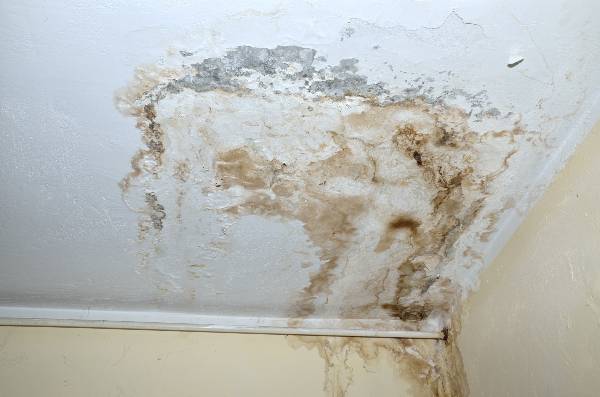Unmasking Concealed Water Line Leaks: Six Smart Detection Methods
Unmasking Concealed Water Line Leaks: Six Smart Detection Methods
Blog Article
We've come across this post relating to Hacks to detect leaks below on the internet and figured it made perfect sense to talk about it with you in this article.

Early detection of dripping water lines can minimize a possible disaster. Some tiny water leaks may not be noticeable.
1. Check Out the Water Meter
Every house has a water meter. Inspecting it is a guaranteed way that helps you discover leaks. For starters, turn off all the water resources. Guarantee no person will certainly purge, use the tap, shower, run the cleaning maker or dishwashing machine. From there, most likely to the meter and watch if it will change. Given that no person is utilizing it, there ought to be no activities. If it moves, that shows a fast-moving leak. Furthermore, if you identify no changes, wait an hour or two and check back again. This means you might have a slow-moving leak that could also be below ground.
2. Check Water Intake
Evaluate your water costs as well as track your water consumption. As the one paying it, you should see if there are any kind of disparities. If you identify sudden changes, regardless of your usage coinciding, it means that you have leaks in your plumbing system. Bear in mind, your water costs must fall under the same range every month. A sudden spike in your bill indicates a fast-moving leak.
A constant increase every month, also with the same practices, shows you have a sluggish leakage that's also gradually rising. Call a plumber to completely examine your home, specifically if you really feel a cozy area on your flooring with piping beneath.
3. Do a Food Coloring Examination
30% comes from toilets when it comes to water intake. Test to see if they are running properly. Decline flecks of food shade in the storage tank and wait 10 minutes. If the color in some way infiltrates your dish throughout that time without flushing, there's a leak between the storage tank and dish.
4. Asses Outside Lines
Do not forget to check your exterior water lines as well. Should water leak out of the link, you have a loosened rubber gasket. One small leakage can throw away lots of water and also surge your water costs.
5. Inspect and Examine the Scenario
House owners ought to make it a routine to inspect under the sink counters and also also inside cupboards for any kind of bad odor or mold development. These 2 warnings indicate a leak so timely attention is needed. Doing regular inspections, also bi-annually, can conserve you from a significant problem.
If you understand your residence is already old, keep a watchful eye on your heating units, hoses, pipes and so on. Check for stainings and also compromising as many home appliances and also pipelines have a life span. They will certainly likewise normally deteriorate due to tear and also put on. If you suspect leaking water lines in your plumbing system, don't wait on it to rise. Call a professional plumber as soon as possible so you don't wind up with an awful mess in your house.
Early discovery of leaking water lines can mitigate a prospective catastrophe. Some small water leaks may not be visible. Checking it is a proven method that assists you uncover leakages. One small leakage can lose lots of water and spike your water expense.
If you believe dripping water lines in your plumbing system, do not wait for it to intensify.
WARNING SIGNS OF WATER LEAKAGE BEHIND THE WALL
PERSISTENT MUSTY ODORS
As water slowly drips from a leaky pipe inside the wall, flooring and sheetrock stay damp and develop an odor similar to wet cardboard. It generates a musty smell that can help you find hidden leaks.
MOLD IN UNUSUAL AREAS
Mold usually grows in wet areas like kitchens, baths and laundry rooms. If you spot the stuff on walls or baseboards in other rooms of the house, it’s a good indicator of undetected water leaks.
STAINS THAT GROW
When mold thrives around a leaky pipe, it sometimes takes hold on the inside surface of the affected wall. A growing stain on otherwise clean sheetrock is often your sign of a hidden plumbing problem.
PEELING OR BUBBLING WALLPAPER / PAINT
This clue is easy to miss in rooms that don’t get much use. When you see wallpaper separating along seams or paint bubbling or flaking off the wall, blame sheetrock that stays wet because of an undetected leak.
BUCKLED CEILINGS AND STAINED FLOORS
If ceilings or floors in bathrooms, kitchens or laundry areas develop structural problems, don’t rule out constant damp inside the walls. Wet sheetrock can affect adjacent framing, flooring and ceilings.
https://www.servicemasterbyzaba.com/blog/how-to-detect-water-leakage-in-walls/

I'm just very fascinated by Finding hidden leaks and I'm hoping you appreciated the new blog posting. Sharing is good. Helping people is fun. Thank-you for taking the time to read it.
Need fast action? Report this page